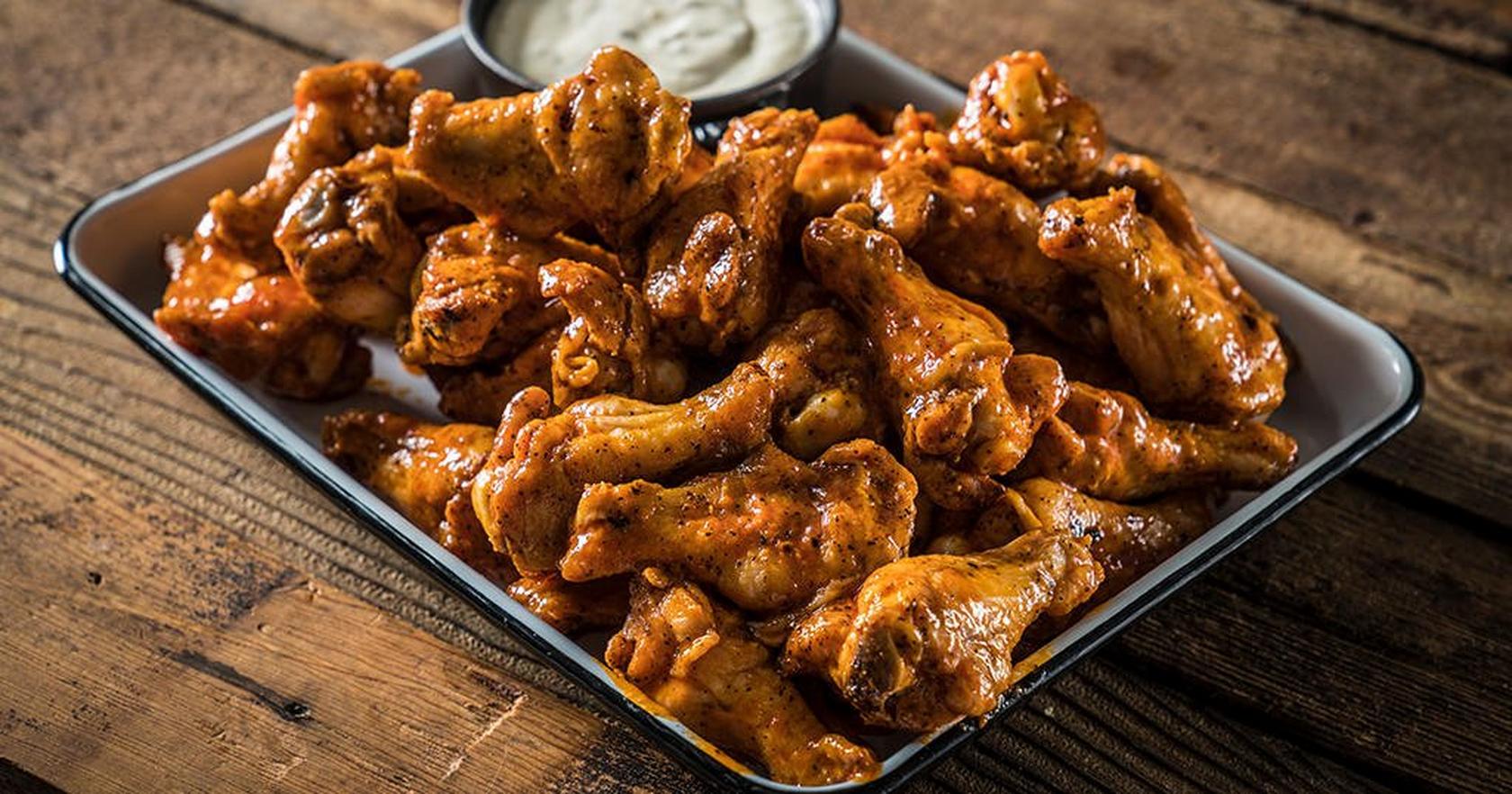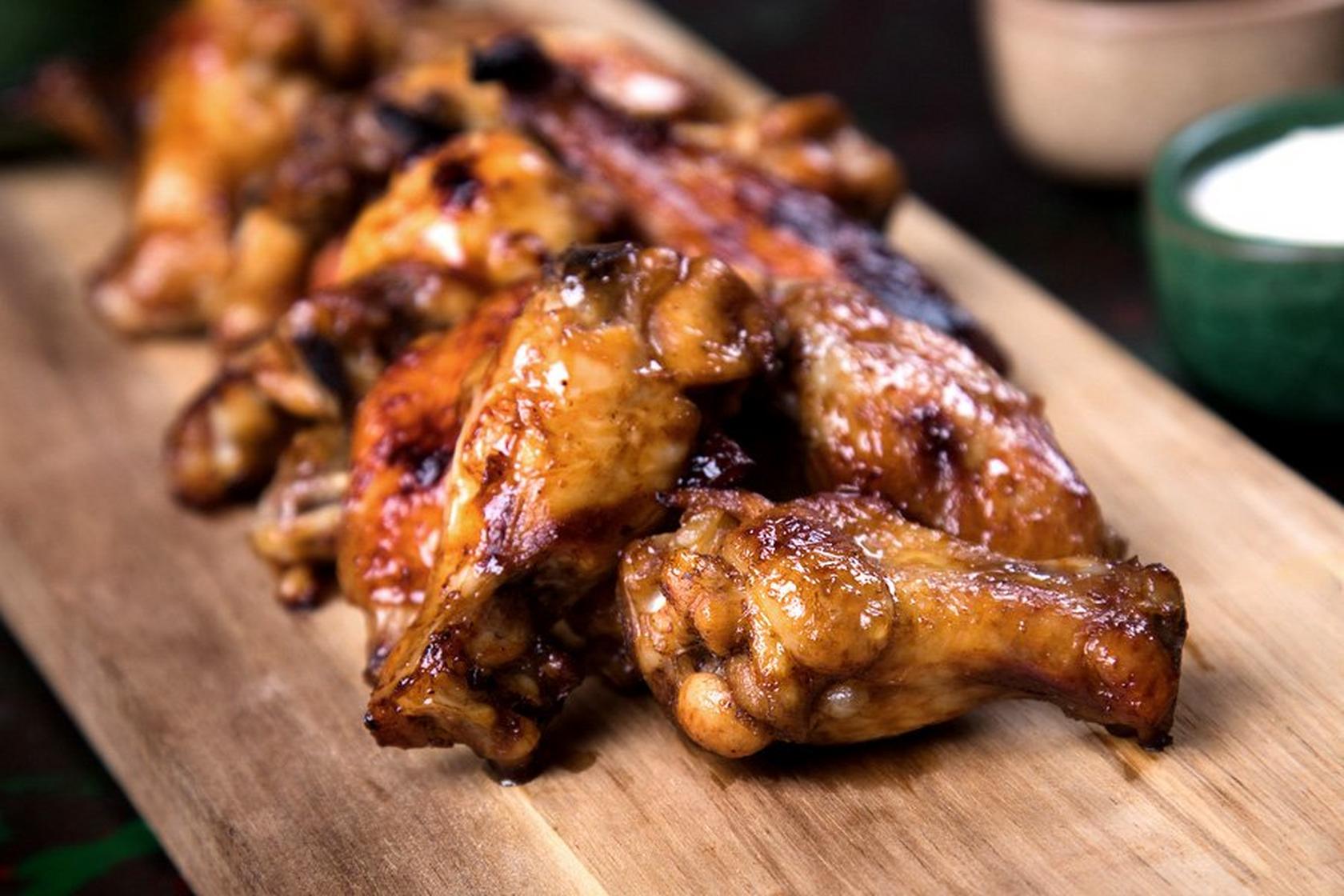Have you ever been staring at a bag of frozen chicken wings in the freezer when guests show up out of the blue? I’ve been there many times! As an avid griller, I’ve learned how to cook frozen chicken wings without sacrificing flavor or texture.
While most BBQ purists insist on thawing first (and they’re not wrong), sometimes life happens and you need those wings NOW. The good news? With the right technique, you can absolutely turn those ice blocks into crispy, juicy, flavor-packed wings your guests will rave about.
The Great Debate: Thawed vs. Frozen
Before we get into the how-to, let’s talk about the big problem: the forum discussion about the Big Green Egg shows that people have different ideas.
- Most experienced grillers recommend thawing wings first
- Some suggest a quick thaw in water to speed up the process
- A few brave souls cook directly from frozen
As one commenter named Richard Fl wisely notes, thawing overnight in the refrigerator uncovered can help dry out the skin for extra crispiness. That’s definitely the gold standard approach.
But if you’re short on time, I’ve got you covered with a workable frozen-to-fantastic method
Why Cooking Frozen Wings is Challenging
Grilling wings straight from the freezer presents several obstacles
- Uneven cooking: The outside can char while the inside remains dangerously undercooked
- Poor seasoning absorption: Ice crystals prevent rubs and marinades from sticking properly
- Safety concerns: Ensuring all parts reach the safe 165°F internal temperature
But with my three-phase approach, we’ll overcome these challenges!
Essential Equipment for Frozen Wing Success
Before firing up the grill, gather these tools:
- Reliable meat thermometer (absolutely non-negotiable for safety!)
- Long-handled tongs for flipping without burning yourself
- Grill basket (optional but helpful to prevent smaller wings from falling through grates)
- Basting brush for sauce application
- Timer to keep track of the extended cooking time
The Three-Phase Approach to Frozen Wing Perfection
Phase 1: Partial Thawing (Optional but Recommended)
You can cook wings that are completely frozen, but the results will be much better if you let them thaw for a short time first:
-
Cold water bath method: Place sealed wings in cold water for 15-30 minutes
- Change water every 10 minutes to speed up the process
- NEVER use warm water (bacterial growth risk)
-
Microwave defrost method: Use defrost setting for 2-3 minutes
- Only if you’ll grill immediately after
- Watch carefully to prevent cooking edges
Even a partial thaw allows for:
- Better seasoning adhesion
- More even cooking
- Shorter overall grill time
Phase 2: Low and Slow Cooking Phase
This is where patience pays off! Start with indirect, gentle heat:
-
Preheat your grill properly: Aim for 250-275°F (121-135°C)
- For charcoal grills: bank coals to one side
- For gas grills: only light burners on one side
-
Season the wings: Even with partially frozen wings, dry rubs work better than wet marinades
- Basic seasoning: salt, pepper, garlic powder, paprika
- Apply generously – some will fall off during cooking
-
Arrange wings for indirect cooking: Place wings on the cooler side of the grill
- Don’t overcrowd! Leave space between wings
- Close the lid to create an oven-like environment
-
Cook patiently: This phase takes 45-60 minutes
- Flip every 15-20 minutes for even cooking
- Monitor temperature regularly with meat thermometer
SamFerrise on the forum says that cooking at 240–250°F for about 2 5 hours works well for their wings. The time depends on the size of the wings and the type of grill you have.
Phase 3: Crispy Skin Finish
Once wings reach about 150-155°F internally, it’s time for the crispy finish:
-
Increase grill temperature: Aim for 375-400°F
- Move to direct heat (carefully!)
- If using a Big Green Egg, adjust vents to increase temperature
-
Flip frequently: Every 2-3 minutes to prevent burning
- Watch closely during this phase
- The skin will start to crisp and brown
-
Apply sauce (if desired): Brush on sauce during final 5-7 minutes
- Multiple thin layers work better than one thick layer
- Allow each layer to “set” before applying the next
-
Check final temperature: Remove wings when they reach 165°F internal temperature
- Test the largest wing in the thickest part
- Avoid touching bone with thermometer (gives false readings)
Expert Wing Grilling Tips from Forum Users
The Big Green Egg forum provided these valuable insights:
- Charlie tuna recommends: “Get them as high up in the dome as possible, indirect at 350 to 375 degrees, 35 to 45 minutes depending on size”
- Mickey suggests: “Cooking at 400 direct raised should run 30 to 35 min” (for thawed wings)
- Hondabbq mentions their “30-20-10” method at 400°F indirect, which their spouse declared “the best she’s ever had”
Common Mistakes to Avoid
My early attempts at grilling frozen wings taught me these lessons the hard way:
- Skipping preheating: Always preheat thoroughly
- Rushing the process: Frozen wings need that low-and-slow start
- Crowding the grill: Wings need space for air circulation
- Sauce too early: Applying sauce too soon leads to burning
- Skipping the rest: Let wings rest 5 minutes after grilling for juicier results
Flavor Variations to Try
Once you’ve mastered the basic technique, experiment with these flavor profiles:
- Classic Buffalo: Equal parts melted butter and Frank’s RedHot
- Honey BBQ: Your favorite BBQ sauce + 2 tbsp honey
- Garlic Parmesan: Melted butter, minced garlic, grated parmesan
- Asian-inspired: Soy sauce, honey, ginger, and garlic
FAQ: Your Frozen Wing Questions Answered
Can I really grill wings directly from frozen?
Yes, but it’s not ideal. The three-phase approach works, but results are better with at least partial thawing.
How long does it take to grill frozen wings?
Total time ranges from 1 to 1.5 hours, depending on wing size and grill temperature.
Is it safe to grill frozen chicken?
Yes, if you ensure the internal temperature reaches 165°F. That’s why a meat thermometer is essential!
Can I use marinades on frozen wings?
Dry rubs work better initially. Save marinades and sauces for the final cooking phase.
Gas or charcoal for frozen wings?
Either works! Gas provides more consistent temperature control, while charcoal adds smoky flavor.
The Verdict on Frozen Wing Grilling
While thawing is preferred (as most forum users suggested), grilling frozen wings is absolutely doable with proper technique. My three-phase approach ensures safe, delicious results even when you’re short on time.
Remember, the key is patience during the initial cooking phase and vigilance during the final crisping stage. And ALWAYS verify internal temperature with a meat thermometer!
Next time unexpected guests arrive, you’ll be ready to transform those frozen wings into a crowd-pleasing treat. Happy grilling!
Have you tried grilling frozen wings? What’s your favorite wing seasoning? Share your experiences in the comments below!

Sauce For Chicken Wings
Like many other meat dishes, the secret often lies in the brine, rubs, or a combination of both, but when it comes to grilled chicken wings, it’s all about the sauce.
A well-made sauce takes chicken wings from boring to incredible. You defininitely want to apply a warm sauce to the meat.
“ You definitely want to apply a warm sauce to the meat. You can also add a little butter to any sauce. When the sauce gets hot, the butter will thin it out and give it a nice shine. – Chad Ward ”.
Here are some popular ideas to get started:
Buffalo wings actually have nothing to do with the animal; they’re named after their birth city, Buffalo, New York. To make your own Buffalo sauce, all you need is hot sauce, butter, and mustard (optional). Simply whisk the ingredients together over your grill or stove until warm and well mixed. For extra heat, add red pepper flakes or chili powder.
Legend has it this recipe was invented by a woman who wanted to get revenge on her cheating husband by setting his mouth on fire, and ended up making one of Tennessees most iconic recipes. To make your own hot rub, combine salt, cayenne pepper, chili powder, garlic, paprika, vinegar, brown sugar, black pepper, and melted butter or lard. Rub this devilish mixture on your wings before and after cooking.
The Best Wood To Smoke Chicken Wings
The best wood to use for smoking is a blend. For example, cut down the strong flavor of hickory by mixing it with cherry wood, or try the winemakers blend. When it comes to poultry in general, light flavors and fruit woods are best. There is a strong sauce that goes with wings, so it’s nice to add a punch of smoke flavor to go with it.


